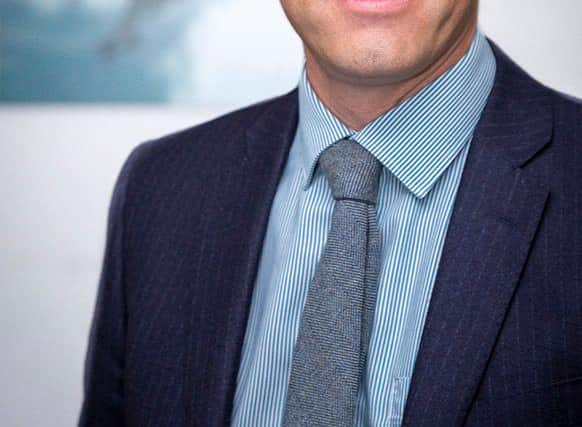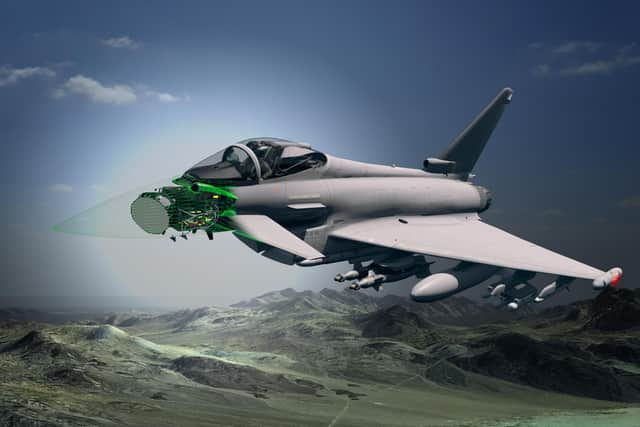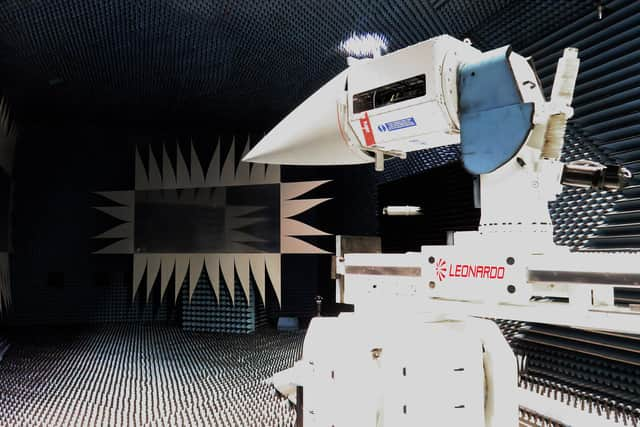Innovative collaboration between Edinburgh experts Leonardo and RAF sees reduced carbon footprint
Experts at Edinburgh aerospace engineering company Leonardo are working closely with the RAF to push forward innovation that is already reducing the carbon footprint of the typhoon radar.
Currently being developed by Leonardo at its sites in Edinburgh and Luton, with integration work being performed by BAE Systems in Warton, the Typhoon’s new ECRS Mk2 will be the most capable fighter radar in the world when it comes into service.
Advertisement
Hide AdAdvertisement
Hide AdBut as well as offering a step change in capability, Leonardo is also developing the radar using new digital engineering techniques to boost efficiency in capability development and support. This also means less test flights will be required before the radar goes into service and therefore less carbon will be emitted during the development programme.


Ross Wilson, Head of Engineering at Leonardo in Edinburgh said: “An increased use of digital techniques and data driven technology leads to reduced physical testing, reduced test flights, reduced rework and reduced equipment sets, all of which contribute to a reduced carbon footprint across the development programme.”
The new tools and technologies Leonardo is using in the radar’s development include digital twinning and model-driven engineering.
“When it goes into service, the ECRS Mk2 will also be able to use what we call mission-loadable elements, which are data and applications which can be quickly uploaded to the radar. The thinking behind this is that we want to make upgrading a radar much less complex than before and more like downloading an app to your smartphone. These can be used to upgrade the system in the field while out on operations. We can test these elements first using advanced digital modelling, again reducing the need for test flights and keeping emissions down.”


Leonardo is committed to net zero carbon emissions from their operations in the UK by 2030 and published their first carbon reduction plan last September. Ross believes that a ‘digital first’ approach to design is a key part of this plan, and that a similar approach will also reduce the carbon footprint of the next generation fighter jet technologies currently being design for Tempest, the UK’s future combat air system.
Leonardo, BAE Systems and RAF team members have also been working together to upskill in the digital domain, with some RAF personnel working on site in Edinburgh’s roof lab, accelerating their adoption of new techniques.
Andy Flynn, Typhoon Capability Delivery Director, BAE Systems – Air, said: "To ensure the safety and quality of a product like Typhoon's advanced new radar, there will always be a need for flight testing - however, we continue to challenge the way we do things to ensure we limit the impact on our environment as much as possible."


A message from the Editor:
Thank you for reading this article. We're more reliant on your support than ever as the shift in consumer habits brought about by coronavirus impacts our advertisers.
If you haven't already, please consider supporting our trusted, fact-checked journalism by taking out a digital subscription.
Comments
Want to join the conversation? Please or to comment on this article.